As someone who’s been in the commercial kitchen equipment industry for over 15 years, I’ve helped countless restaurant owners, chefs, and catering businesses pick the right tools to keep their kitchens running smoothly. When it comes to commercial induction cooktops, one of the most common dilemmas is choosing between single-head and double-head models. It’s not just about picking the one with more burners—it’s about finding the right fit for your kitchen’s needs, budget, and workflow. In this article, I’ll share my insights from years of working with clients, installing equipment, and troubleshooting real-world kitchen challenges to help you decide which option suits your business best. Whether you’re running a small café or a bustling restaurant, let’s break it down step by step.
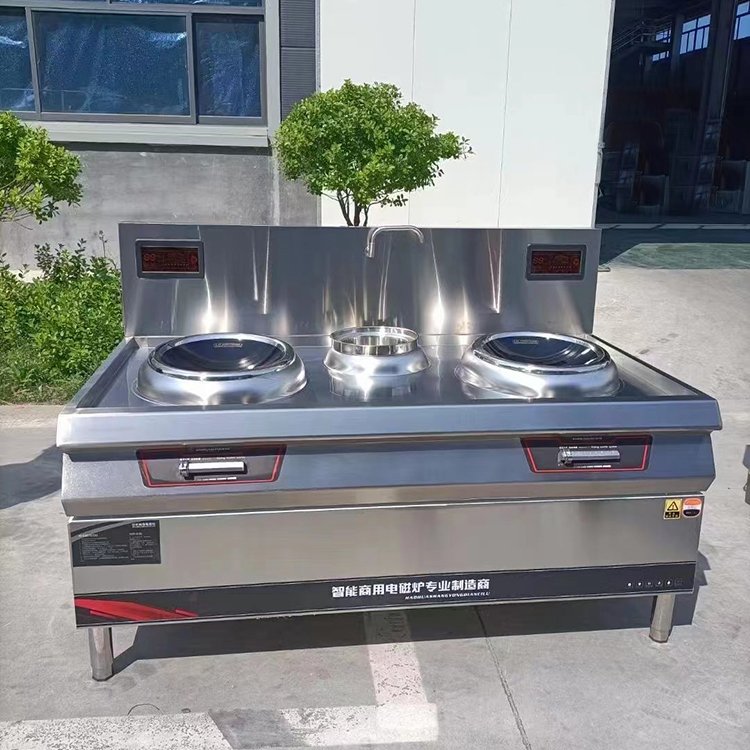
Understanding Single-Head and Double-Head Induction Cooktops
Before diving into the decision-making process, let’s clarify what single-head and double-head commercial induction cooktops are. A single-head induction cooktop has one cooking zone, designed for focused cooking tasks. A double-head model, as the name suggests, has two independent cooking zones, allowing you to prepare multiple dishes simultaneously. Both use electromagnetic technology to heat cookware directly, offering precision, energy efficiency, and faster cooking compared to traditional gas or electric stoves.
My first experience with induction cooktops was back in 2010, when I helped a small noodle shop transition from gas to induction to save on energy costs. The owner was skeptical at first, but after seeing how quickly the single-head cooktop boiled water and how easy it was to clean, he was sold. Since then, I’ve seen induction technology evolve, and the choice between single and double-head models has become a critical decision for many businesses.
Key Factors to Consider When Choosing
Choosing between a single-head and double-head induction cooktop isn’t a one-size-fits-all decision. Based on my experience, here are the main factors to weigh:
1. Kitchen Space and Layout
Space is often the biggest constraint in commercial kitchens. Single-head induction cooktops are compact, typically measuring 12-18 inches wide, making them ideal for small kitchens, food trucks, or pop-up stalls. They can fit on a countertop or be built into a tight cooking station without overwhelming the workspace.
Double-head induction cooktops, on the other hand, require more room—usually 24-36 inches wide. If your kitchen has ample counter space or a dedicated cooking line, a double-head unit can boost efficiency by allowing multiple dishes to cook at once. I once worked with a busy dim sum restaurant that upgraded to a double-head model. The extra burner let their chefs steam buns and stir-fry vegetables simultaneously, cutting prep time significantly.
If your kitchen is cramped, measure your available space carefully. I’ve seen clients overestimate their counter space and end up with a double-head unit that cramped their workflow. A good rule of thumb is to ensure at least 6 inches of clearance around the cooktop for ventilation and safety.
2. Cooking Volume and Menu Demands
Your menu and daily order volume play a huge role in this decision. Single-head cooktops are great for businesses with simpler menus or lower output, like coffee shops, small bakeries, or catering services that focus on one dish at a time. For example, a client running a crepe stand used a single-head cooktop to prepare crepes one by one, and it was more than enough for their needs.
Double-head cooktops shine in high-volume settings or kitchens with diverse menus. If you’re running a restaurant that serves stir-fries, soups, and sauces simultaneously, the ability to cook on two burners can be a game-changer. I worked with a Thai restaurant that switched to a double-head model, and the chefs loved how they could simmer curry on one burner while searing meat on the other, speeding up service during peak hours.
Ask yourself: How many dishes do you prepare at once? If your menu requires multitasking, a double-head model might be worth the investment. If your operation is more sequential, a single-head unit could suffice.
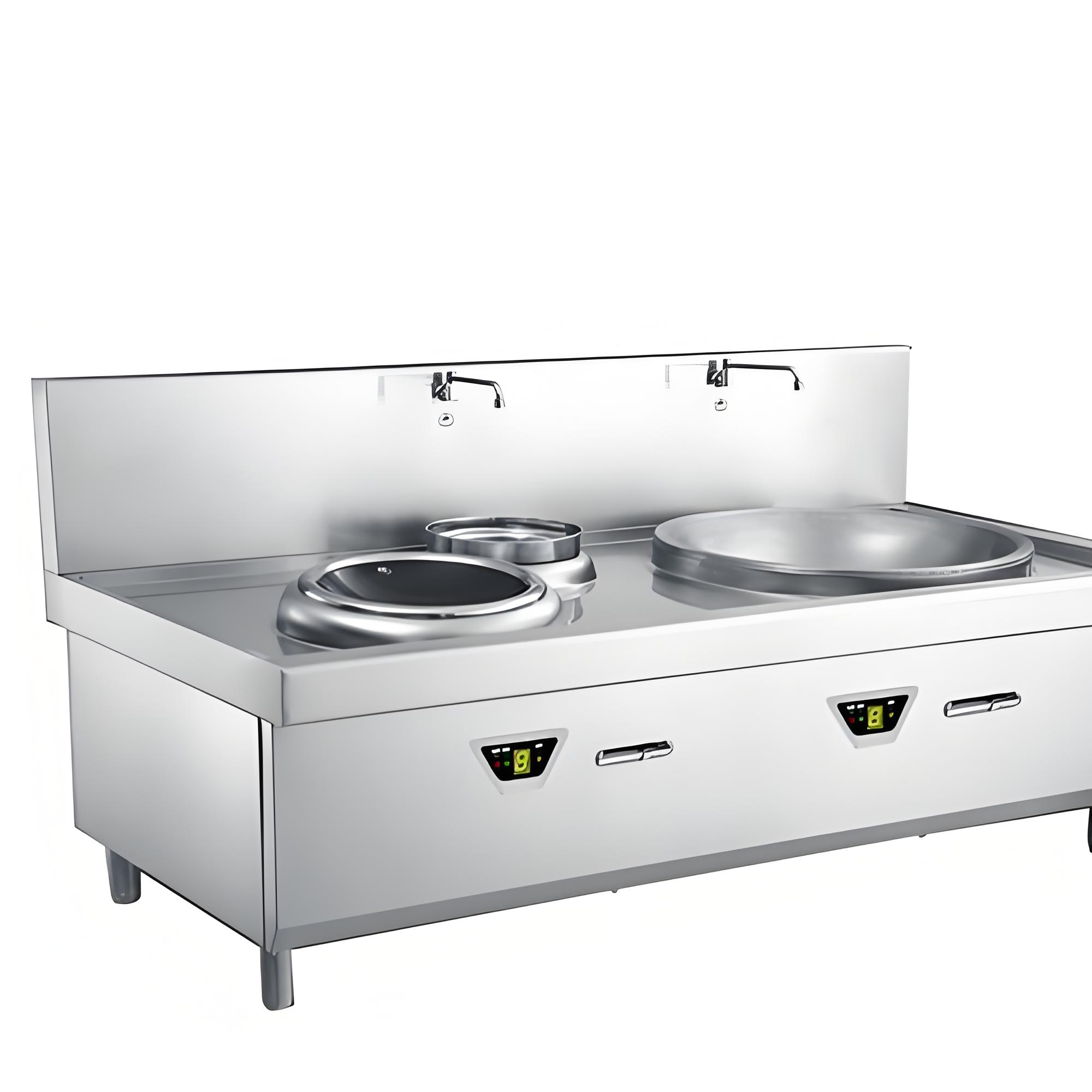
3. Power and Energy Considerations
Induction cooktops are energy-efficient, but their power requirements vary. Single-head cooktops typically range from 1.8 to 3.5 kW, while double-head models can demand 3.5 to 7 kW or more. This means double-head units require a robust electrical setup, often a 220-240V outlet with higher amperage.
I once consulted for a small bistro that didn’t check their electrical capacity before buying a double-head cooktop. The result? Frequent circuit breaker trips during peak hours. We had to rewire part of the kitchen, which added unexpected costs. Before you buy, check your kitchen’s electrical panel and consult an electrician to confirm it can handle the load.
Here’s a quick comparison table based on my observations of typical models:
| Cooktop Type | Power Range (kW) | Space Required (Inches) | Typical Use Case |
|---|---|---|---|
| Single-Head Induction | 1.8-3.5 | 12-18 | Small cafés, food trucks |
| Double-Head Induction | 3.5-7.0 | 24-36 | Restaurants, high-volume kitchens |
Energy efficiency is another plus for induction. Both types use less energy than gas stoves, but a double-head model’s higher output can lead to slightly higher electricity costs. If you’re in a region with high utility rates, factor this into your budget.
4. Budget and Cost of Ownership
Single-head cooktops are generally cheaper, with prices ranging from $200 to $800 for commercial-grade models. Double-head cooktops cost more, typically $500 to $1,500, depending on brand and features. Beyond the upfront cost, consider maintenance and durability. Induction cooktops have no open flames or exposed heating elements, so they’re less prone to wear and tear, but double-head models may have higher repair costs due to their complexity.
I worked with a startup café owner who was tempted to buy a double-head model for “future growth.” But with their initial budget and low order volume, I recommended a single-head unit. They saved $700 upfront and used the extra funds for better cookware, which made a bigger impact on their operations. If your budget is tight, start with a single-head model and upgrade later as your business grows.
5. Ease of Use and Cleaning
One of the biggest perks of induction cooktops is how easy they are to clean. Both single and double-head models have smooth, flat surfaces that wipe down quickly, unlike gas stoves with burners and grates. However, double-head cooktops give you more cooking surface, which can mean more spills to clean during a busy shift. On the flip side, having two burners can reduce bottlenecks, so you’re not constantly swapping pots on a single burner.
I recall a ramen shop where the chefs were juggling pots on a single-head cooktop during lunch rushes. Switching to a double-head model not only sped up cooking but also reduced spills because they could keep pots in place. If your kitchen sees heavy use, the extra burner might save more time than it adds to cleaning.
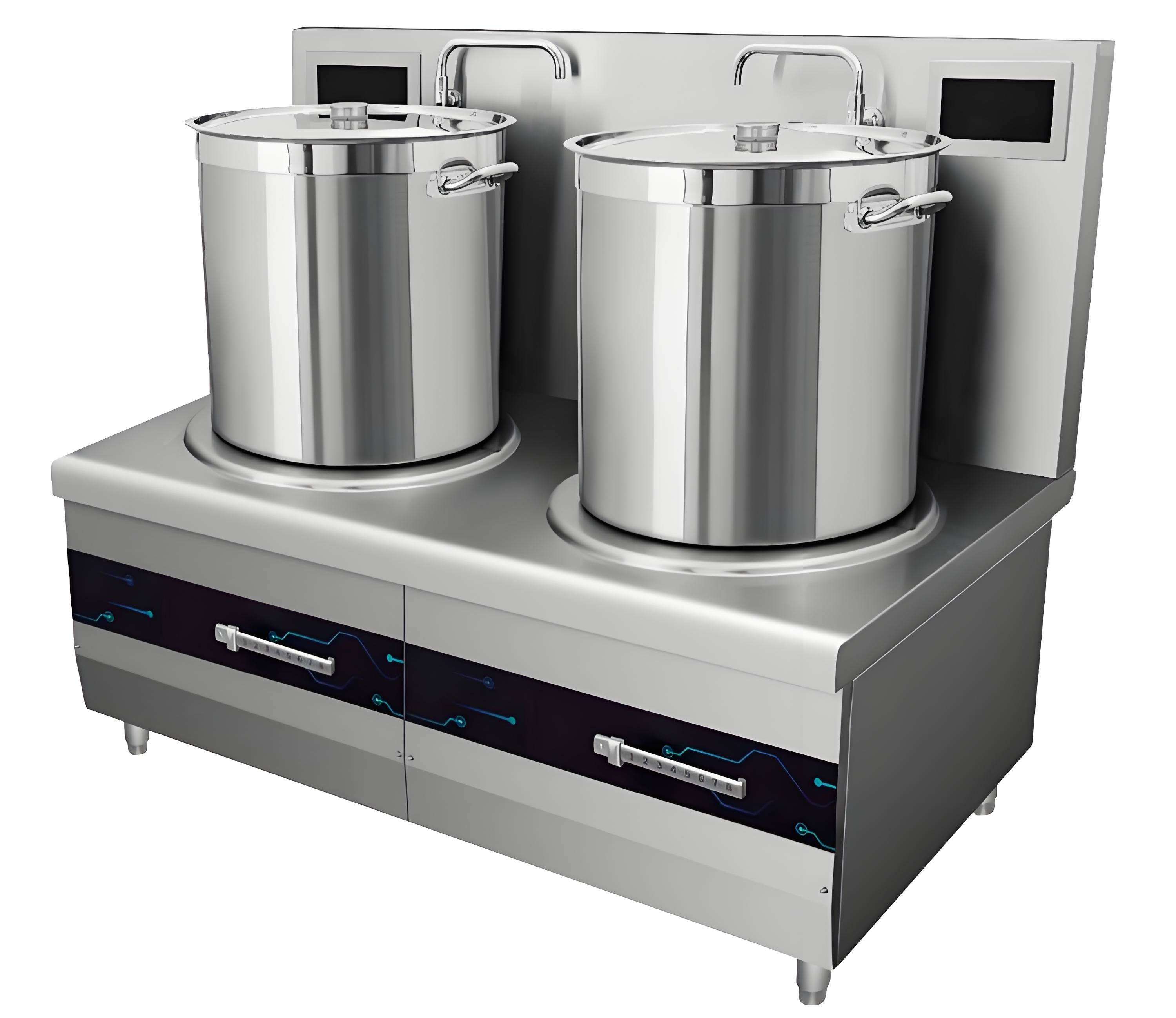
When to Choose a Single-Head Induction Cooktop
From my experience, a single-head induction cooktop is the better choice in these scenarios:
Small kitchens or mobile setups: Food trucks, pop-up stalls, or tiny cafés with limited counter space.
Low to medium cooking volume: Businesses like bakeries, dessert shops, or catering services that focus on one dish at a time.
Tight budgets: If you’re just starting out or need to keep initial costs low.
Simple menus: If your menu involves minimal simultaneous cooking, like brewing coffee or making sandwiches.
I helped a juice bar owner set up a single-head cooktop for preparing small batches of soups and sauces to complement their drinks. The compact size fit perfectly in their tiny prep area, and the precision temperature control was ideal for simmering without scorching delicate ingredients.
When to Choose a Double-Head Induction Cooktop
A double-head induction cooktop is the way to go if:
You have a busy kitchen: Restaurants, diners, or catering businesses with high order volumes.
Your menu is diverse: If you need to cook multiple dishes at different temperatures simultaneously.
Space isn’t an issue: Larger kitchens with ample counter space or dedicated cooking stations.
You have the electrical capacity: Your kitchen’s wiring can support the higher power demands.
A client running a fusion restaurant with a menu of stir-fries, curries, and grilled items switched to a double-head cooktop. The ability to cook two dishes at once cut their prep time by 25%, allowing them to serve more customers during peak hours.
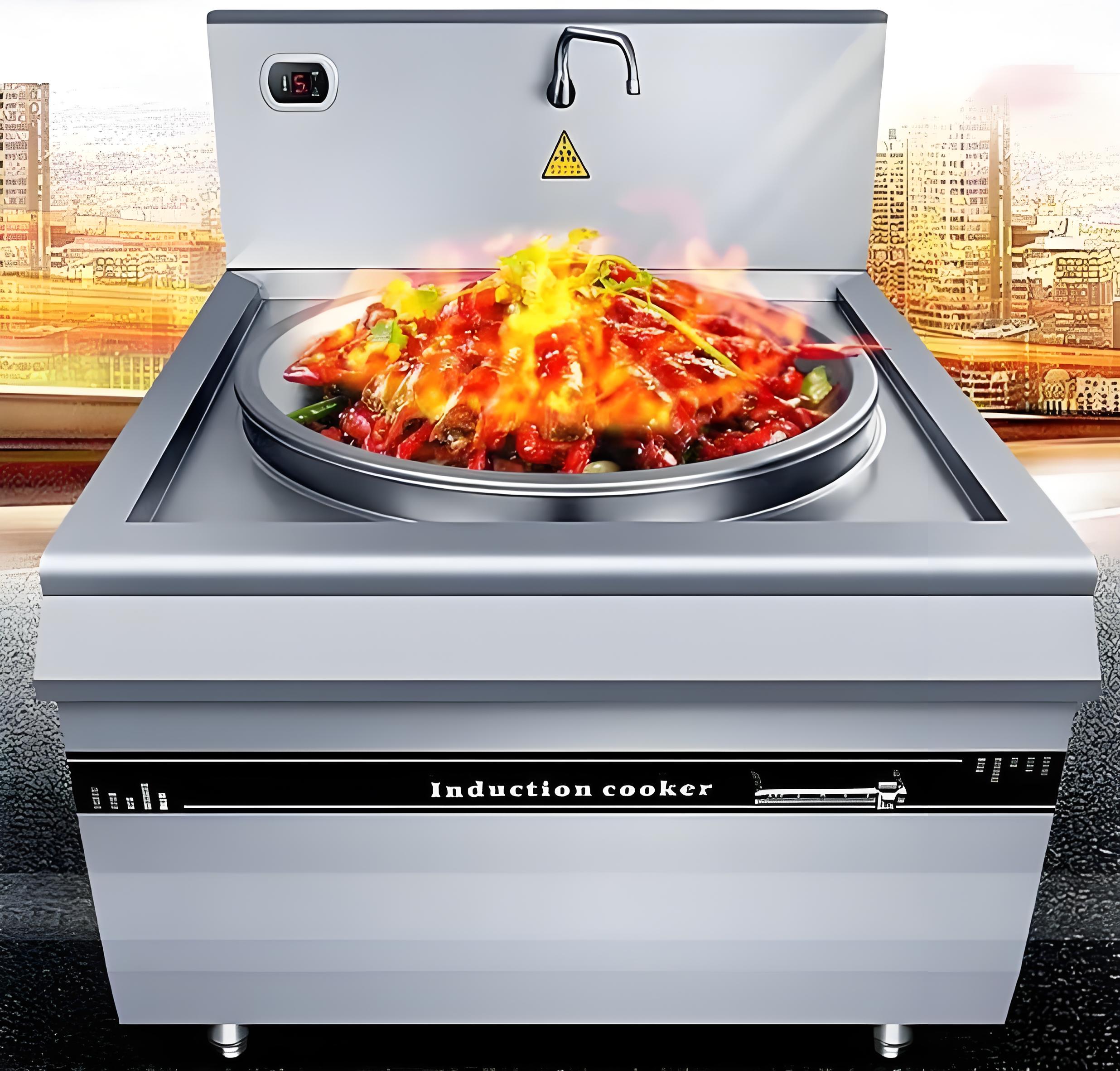
Other Practical Considerations
1. Cookware Compatibility
Induction cooktops require ferromagnetic cookware (like cast iron or stainless steel). If your current pots and pans aren’t compatible, you’ll need to invest in new ones. Double-head models might require more cookware to fully utilize both burners, so factor this into your budget. I always advise clients to test their existing cookware with a magnet—if it sticks, it’s induction-ready.
2. Brand and Warranty
Not all induction cooktops are created equal. Based on my projects, brands like Vollrath, Avantco, and CookTek offer reliable commercial models with good warranties (1-2 years). Double-head units often have more complex electronics, so check the warranty terms for repairs. I once had a client who bought a cheap, off-brand double-head model, only to face frequent breakdowns. Spending a bit more on a trusted brand can save headaches down the line.
3. Ventilation and Safety
Induction cooktops produce less heat than gas stoves, but proper ventilation is still crucial, especially for double-head models with higher output. Ensure your kitchen has adequate airflow to prevent overheating. Also, look for models with safety features like auto-shutoff or overheating protection, which are standard in most commercial-grade units.
Real-World Case Studies
Let me share two projects that highlight the differences. First, I worked with a small bakery that needed a cooktop for making custards and sauces. Their kitchen was tiny—barely 100 square feet—so we went with a single-head induction cooktop. It fit perfectly on their countertop, and the precise temperature control ensured consistent results. The owner later told me it was one of their best equipment investments, as it saved both space and energy.
Contrast that with a mid-sized Asian fusion restaurant I consulted for. Their kitchen was handling 200+ orders daily, with chefs constantly juggling woks and pots. We installed a double-head induction cooktop, and it transformed their workflow. The ability to stir-fry on one burner while boiling noodles on the other cut service time by 20%. The chefs also appreciated how cool the kitchen stayed compared to their old gas setup.
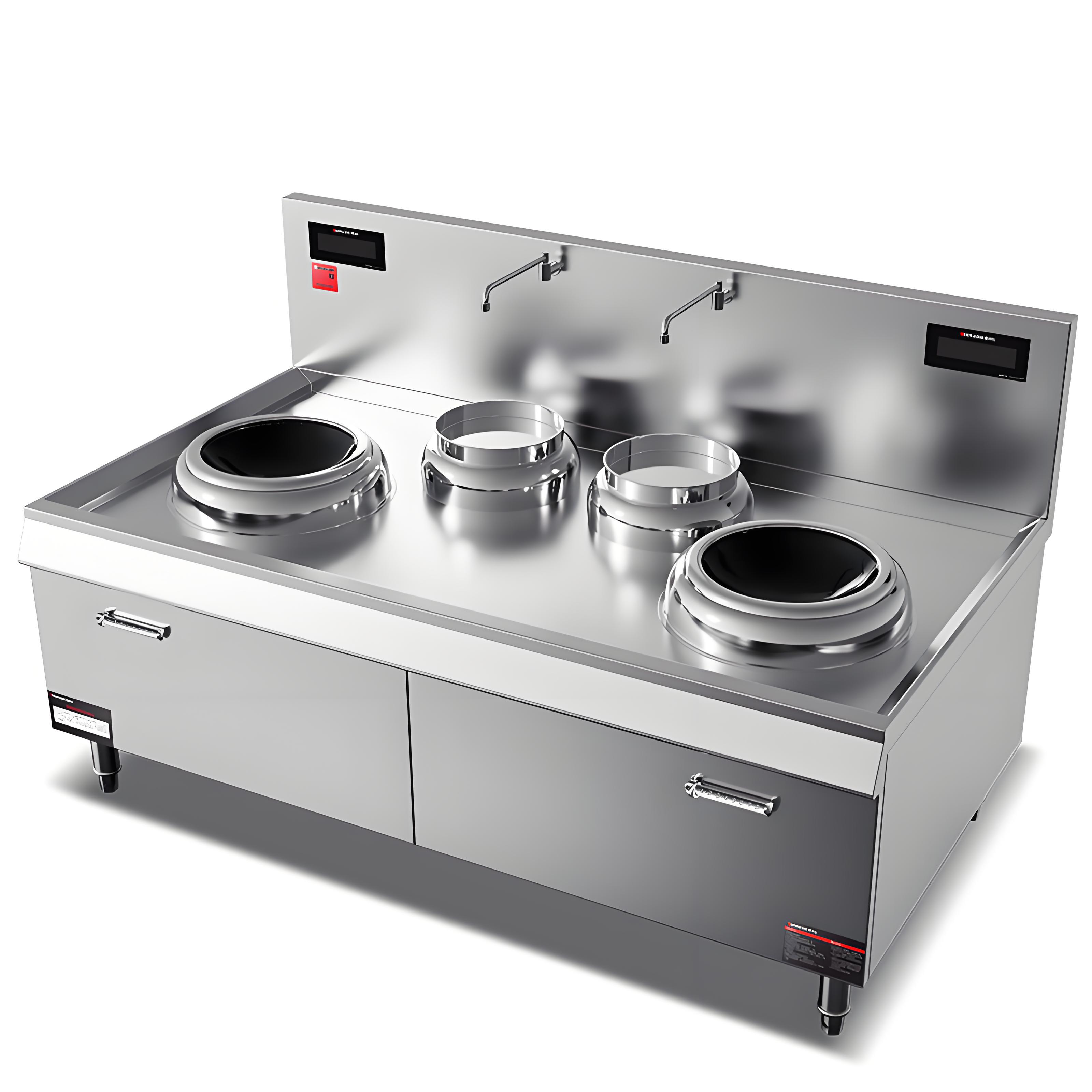
Tips for Making Your Decision
Assess Your Kitchen’s Needs
Walk through your daily operations. How many dishes do you cook at once? How much space do you have? This will guide whether a single or double-head model is better.
Check Your Electrical Setup
Before buying, confirm your kitchen’s power capacity with an electrician. Double-head models often need dedicated circuits.
Test Before You Buy
If possible, visit a supplier’s showroom to see the cooktop in action. Check the controls, heat-up speed, and build quality.
Plan for Growth
If you’re planning to scale your business, a double-head model might offer more flexibility down the line. But don’t overspend if you don’t need the extra capacity now.
Conclusion: Single-Head or Double-Head?
Choosing between a single-head and double-head commercial induction cooktop boils down to your kitchen’s size, menu complexity, order volume, and budget. If you’re running a small operation with limited space or simpler cooking needs, a single-head model is likely your best bet for its affordability and compact design. For busier kitchens with diverse menus and enough space, a double-head cooktop can boost efficiency and handle the demands of a fast-paced environment.
Before you decide, take a close look at your kitchen’s setup and talk to your team about their workflow. If possible, consult with an equipment supplier or electrician to ensure you’re choosing a model that fits both your current needs and future goals. The right cooktop can make your kitchen more efficient, save on energy costs, and keep your customers happy with faster service.

Frequently Asked Questions
Q1: Can I use a double-head induction cooktop in a small kitchen?
A: It’s possible if you have enough counter space (at least 24-36 inches) and the electrical capacity to support it. However, for very small kitchens, a single-head model is usually more practical to avoid overcrowding.
Q2: Are double-head cooktops worth the extra cost?
A: If your kitchen handles high volumes or requires simultaneous cooking, the extra burner can save time and improve efficiency, justifying the cost. For low-volume operations, a single-head model is often sufficient.
Q3: Do I need special cookware for induction cooktops?
A: Yes, you’ll need ferromagnetic cookware (like stainless steel or cast iron) that works with induction. Test your existing pots with a magnet—if it sticks, they’re compatible.
Q4: How do I know if my kitchen’s electrical system can handle a double-head cooktop?
A: Check your electrical panel’s capacity and consult an electrician. Double-head models typically require a 220-240V outlet and 20-30 amps, depending on the model.
Q5: Are induction cooktops safe for commercial kitchens?
A: Absolutely. They’re safer than gas stoves since there’s no open flame, and most models have safety features like auto-shutoff. Just ensure proper ventilation and compatible cookware for optimal performance.




